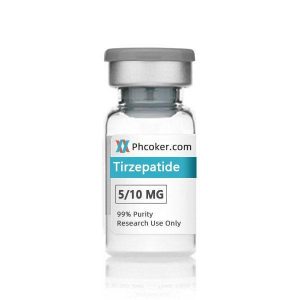Diabetes mellitus is a chronic metabolic disorder characterized by elevated blood sugar levels resulting from either insufficient insulin production or the body’s inability to effectively utilize insulin.
There are two main types of diabetes: type 1 diabetes, which is caused by autoimmune destruction of insulin-producing beta cells in the pancreas, and type 2 diabetes, which typically develops due to a combination of genetic predisposition and lifestyle factors such as obesity and physical inactivity. Diabetes can lead to serious complications such as cardiovascular disease, kidney failure, neuropathy, and vision loss if not properly managed.
Importance of Individualized Treatment Approaches:
Managing diabetes requires a multifaceted approach that addresses various aspects of the disease, including blood sugar control, weight management, blood pressure regulation, and cholesterol levels.

However, the optimal treatment strategy may vary depending on individual factors such as age, comorbidities, medication tolerability, lifestyle habits, and personal preferences.
Therefore, it is essential to tailor treatment plans to meet the unique needs and circumstances of each patient. An individualized approach to diabetes care can help optimize treatment outcomes, improve quality of life, and reduce the risk of complications.
Tirzepatide 10MG and Semaglutide as Options for Diabetes Management:
Tirzepatide 10MG and Semaglutide are two medications that belong to the class of glucagon-like peptide-1 receptor agonists (GLP-1 RAs), which are commonly used in the management of type 2 diabetes. These medications work by mimicking the action of the incretin hormone GLP-1, which stimulates insulin secretion, suppresses glucagon release, slows gastric emptying, and promotes satiety.
By targeting multiple pathways involved in glucose metabolism and appetite regulation, GLP-1 RAs offer several benefits for individuals with type 2 diabetes, including improved glycemic control, weight loss, and reduced risk of cardiovascular events.
Tirzepatide 10MG is a novel dual agonist that activates both the GLP-1 and glucose-dependent insulinotropic polypeptide (GIP) receptors, while Semaglutide specifically targets the GLP-1 receptor.
Both medications have demonstrated efficacy in lowering blood sugar levels and promoting weight loss in clinical trials. However, they may have different pharmacokinetic profiles, dosing regimens, and side effect profiles, which can influence their suitability for individual patients.
Tirzepatide 10MG
Tirzepatide 10MG is a novel dual glucose-dependent insulinotropic polypeptide (GIP) and glucagon-like peptide-1 (GLP-1) receptor agonist. It works by binding to and activating both the GIP and GLP-1 receptors in the body.
Activation of the GLP-1 receptor stimulates insulin secretion from pancreatic beta cells in a glucose-dependent manner, meaning that insulin release is triggered only when blood sugar levels are elevated. This helps to regulate blood sugar levels without causing hypoglycemia.
Efficacy in Blood Sugar Control:
Tirzepatide 10MG has demonstrated potent efficacy in lowering blood sugar levels in patients with type 2 diabetes. Clinical trials have shown that treatment with tirzepatide leads to significant reductions in HbA1c levels, a marker of long-term blood sugar control, compared to placebo and other diabetes medications.
The glucose-dependent insulinotropic effects of tirzepatide help to improve insulin sensitivity and promote glucose uptake by peripheral tissues, leading to better glycemic control.
Efficacy in Weight Loss:
In addition to its effects on blood sugar control, tirzepatide 10MG has also shown remarkable efficacy in promoting weight loss. Clinical trials have consistently demonstrated that patients treated with tirzepatide experience significant reductions in body weight compared to placebo and other diabetes medications.
Safety Profile:
Tirzepatide 10MG has been generally well-tolerated in clinical trials, with adverse events typically being mild to moderate in severity. The most common side effects associated with tirzepatide include gastrointestinal symptoms such as nausea, vomiting, diarrhea, and constipation. These side effects often occur early in treatment and tend to improve over time.
Individualized Treatment Approaches:
When considering tirzepatide 10MG for individualized treatment approaches, healthcare providers should take into account factors such as patient preferences, comorbidities, medication adherence, and potential drug interactions. Patients who are overweight or obese and require both improved blood sugar control and weight loss may particularly benefit from tirzepatide therapy.
Semaglutide
Semaglutide is a glucagon-like peptide-1 (GLP-1) receptor agonist that mimics the action of endogenous GLP-1. Upon administration, semaglutide activates GLP-1 receptors, primarily located in pancreatic beta cells, leading to increased insulin secretion in a glucose-dependent manner.

This helps to lower blood sugar levels by facilitating glucose uptake and utilization in peripheral tissues. Additionally, semaglutide inhibits glucagon secretion from pancreatic alpha cells, which further contributes to its blood sugar-lowering effects.
Efficacy in Blood Sugar Control:
Clinical trials have demonstrated the efficacy of semaglutide in improving blood sugar control in patients with type 2 diabetes. Semaglutide has been shown to significantly reduce HbA1c levels, a marker of long-term blood sugar control, compared to placebo and other antidiabetic medications.
In studies such as the SUSTAIN program, patients treated with semaglutide experienced greater reductions in HbA1c levels over the course of treatment.
Efficacy in Weight Loss:
Semaglutide has also demonstrated significant efficacy in promoting weight loss in patients with type 2 diabetes. Clinical trials such as the STEP program have shown that treatment with semaglutide leads to greater weight loss compared to placebo and other diabetes medications.
In these studies, patients treated with semaglutide experienced clinically meaningful reductions in body weight, which were sustained over the treatment period.
Safety Profile:
Overall, semaglutide has a favorable safety profile, with adverse events typically being mild to moderate in severity. Common side effects associated with semaglutide treatment include gastrointestinal symptoms such as nausea, vomiting, and diarrhea, which often occur during the initial titration period and tend to diminish over time.
Individualized Treatment Approaches
When choosing between Tirzepatide 10MG and Semaglutide for individualized diabetes treatment, several factors should be considered. These include:
- Efficacy: Reviewing the patient’s response to previous treatments and assessing which medication may offer better glycemic control and weight loss outcomes.
- Tolerability: Considering the patient’s tolerance to potential side effects, such as gastrointestinal symptoms or injection site reactions, associated with each medication.
- Convenience: Evaluating the dosing frequency, administration route (e.g., subcutaneous injection), and overall treatment regimen to determine which medication aligns better with the patient’s lifestyle and preferences.
- Cost: Taking into account insurance coverage, copayments, and affordability of both Tirzepatide 10MG and Semaglutide to ensure accessibility and adherence to treatment.
Tailoring Treatment Based on Patient Characteristics and Preferences:
Each patient with diabetes is unique, and their treatment plan should be tailored to their individual characteristics, preferences, and needs. This may involve:
- Considering the patient’s age, comorbidities, disease duration, and overall health status to determine the most appropriate medication.
- Discussing treatment goals and expectations with the patient to ensure alignment and shared decision-making.
- Involving the patient in the selection process by providing information about the benefits, risks, and alternatives of Tirzepatide 10MG and Semaglutide.
- Adapting the treatment plan over time based on the patient’s response, changes in medical status, and evolving preferences.
Monitoring and Adjusting Treatment Plans as Needed:
Regular monitoring and follow-up are essential components of individualized diabetes treatment approaches. Healthcare providers should:
- Monitor the patient’s blood sugar levels, weight, and other relevant parameters at regular intervals to assess treatment effectiveness and safety.
- Educate patients about self-monitoring techniques and empower them to track their progress and report any concerns or changes in symptoms.
- Collaborate with patients to adjust treatment plans as needed, such as titrating medication doses, adding or discontinuing adjunctive therapies, or addressing lifestyle factors that may impact diabetes management.
- Provide ongoing support, education, and resources to promote patient engagement and adherence to the treatment plan.
Conclusion:
Both Tirzepatide 10MG and Semaglutide offer significant benefits in the management of diabetes when tailored to individual patient needs. Tirzepatide 10MG has shown efficacy in improving blood sugar control and promoting weight loss, while Semaglutide has demonstrated similar benefits.
These medications provide valuable options for healthcare providers to customize treatment plans and optimize outcomes for patients with diabetes.
It is crucial for healthcare providers to consider patient-specific factors when choosing between Tirzepatide 10MG and Semaglutide in diabetes treatment. Factors such as comorbidities, medication adherence, lifestyle preferences, and individual treatment goals should all be taken into account.
By tailoring treatment plans to the unique needs of each patient, healthcare providers can maximize the benefits of these medications and improve patient outcomes.
 Naa Songs
Naa Songs




